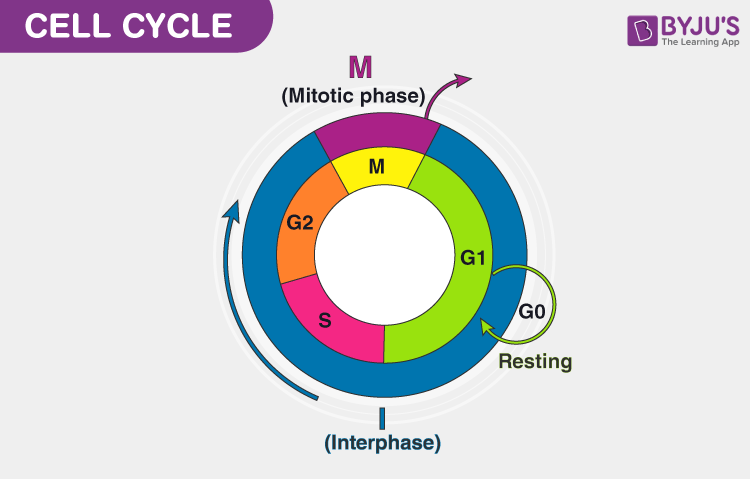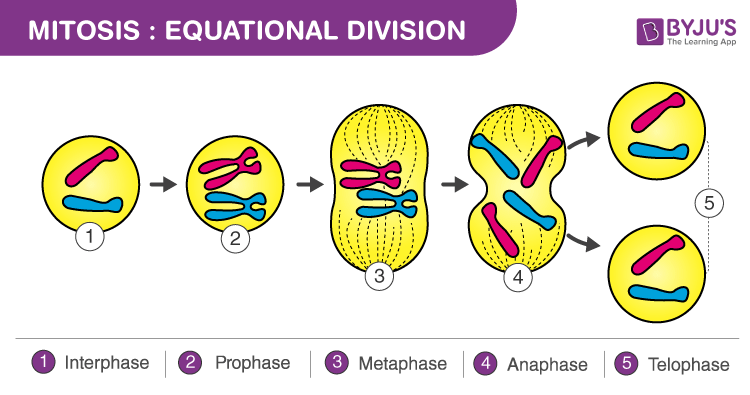Find below the important notes for the chapter, Cell Cycle and Cell Division, as per NEET Biology syllabus. This is helpful for aspirants of NEET and other exams during last-minute revision. Important notes for NEET Biology- Cell Cycle and Cell Division covers all the important topics and concepts useful for the exam. Check BYJU’S for the full set of important notes and study material for NEET Biology and solve the NEET Biology MCQs to check your understanding of the subject.
Download Complete Chapter Notes of Cell Cycle and Cell Division
Download Now
| Name of the NEET sub-section | Topic | Notes helpful for |
| Biology | Cell Cycle and Cell Division | NEET exams |
Cell Cycle and Cell Division – Important Points, Summary, Revision, Highlights
Table of Contents
Cell Cycle and Cell Division
Cell division is essential for growth, repair and reproduction. Many cell cycles transform a single cell to a multicellular organism.
Also Check: NEET Answer Key 2022


Cell Cycle
- Cell growth, DNA replication and cell division constitute a cell cycle
- Events happening in a cell cycle is genetically controlled
- Duration of cell cycle varies in different organisms and different types of cells. The average duration of the human cell cycle is 24 hrs, whereas a yeast cell completes one cell cycle in 90 minutes
- The cell cycle is divided into Interphase and M phase
- Interphase: Cell growth and replication of DNA. It constitutes 95% of the duration of a cell cycle
- M Phase: Mitosis (cell division)
Phases of the Cell Cycle

A. Interphase
Interphase is the time lapse between two successive M phases of cell division. The cell prepares for division, grows and DNA replication takes place. Interphase is further divided into three phases: G1, S, G2
- G1 Phase or Gap 1: It is the gap between previous mitosis and DNA replication of the next cell cycle
- S Phase or Synthesis: In this phase DNA replication takes place. The DNA content of the cell doubles and centriole duplicates. It is important to note that the chromosome number remains the same
- G2 Phase or Gap 2: Cell continues to grow and prepare for mitosis. Protein synthesis takes place. In an adult human being, there are many cells, which do not divide, e.g. heart cells divide occasionally only to replace injured and dead cells. These cells enter an inactive phase called G0 or quiescent stage of the cell cycle
B. M Phase: This is the phase where actual cell division occurs. The number of chromosomes in the parent and daughter cells remains the same so it is also known as equational division.
Karyokinesis, i.e. nuclear division is followed by cytokinesis, i.e. division of the cytoplasm to give rise to two daughter cells
Also See: 4 Phases of Cell Cycle
Mitosis

- Mitosis mostly occurs in the diploid somatic cells of animals with few exceptions, haploid male drone of honey bees
- In plants, mitosis happens in both haploid and diploid cells
- Mitosis is responsible for genetic continuity and growth and repair of multicellular organisms
- In humans, the epithelial lining, lining of gut and blood cells are replaced continuously
- In plants, meristematic tissues divide continuously throughout their life
- Mitosis accounts for the asexual reproduction or vegetative propagation, where identical individuals are formed
- Karyokinesis occurs in four sequential stages:
- Prophase
- Metaphase
- Anaphase
- Telophase
- Karyokinesis is followed by cytokinesis
- Prophase
- Chromosomes untangle and condense
- Two chromatids attached to the centromere can be seen clearly
- Each of the duplicated centrosomes radiates microtubules (asters)
- Mitotic apparatus constitutes spindle fibres and asters
- Golgi bodies, nucleolus, endoplasmic reticulum and nuclear membrane disappear
- Metaphase
- Complete disintegration of the nuclear envelope
- Two sister chromatids attached by the centromere aligned at the equator, i.e. metaphase plate
- Each chromatid is attached to spindle fibres from opposite poles at kinetochores
- Anaphase
- Splitting of centromere and two sister chromatids separate and go towards the opposite poles
- Sister chromatids now become the daughter chromosomes
- Telophase:
- Chromosomes cluster at opposite poles and decondense
- Nuclear envelope develops around each cluster of chromosomes and two daughter nuclei are formed
- The nucleolus, endoplasmic reticulum and Golgi apparatus are reformed
Cytokinesis: Separation of cytoplasm takes place after two nuclei are formed. Cell organelles get distributed between daughter cells.
In some organisms like fungi, algae and plant cells, cytokinesis is not immediately followed by karyokinesis and the multinucleate stage is formed known as a syncytium, e.g. liquid endosperm in coconut, coenocytic hyphae of Rhizopus, etc.
Meiosis
- Meiosis is also known as reduction division
- Haploid gametes formed during sexual reproduction (gametogenesis) are due to meiosis
- Meiosis is responsible for maintaining conservation of the number of chromosomes in different individuals of the same species
- Meiosis also accounts for the genetic variation or differences between two individuals of the same species
- There are two sequential cell divisions, i.e. Meiosis I and Meiosis II
- DNA replication occurs only once in the S phase before meiosis I
- In meiosis I, the pairing of homologous chromosomes is followed by recombination between non-sister chromatids and formation of two haploid daughter cells
- Meiosis II is like a mitotic division and at the end of meiosis, 4 haploid daughter cells are formed
Meiosis I
Prophase I
It is an extended stage and further divided into various stages:
- Leptotene- Chromosomes start condensing
- Zygotene- Pairing of homologous chromosomes. Synapsis is characterized by the formation of the synaptonemal complex. Chromosomes appear as bivalent or tetrad
- Pachytene- Crossing over takes place between non-sister chromatids and recombination nodule is formed. It is an enzyme-mediated process. The enzyme responsible for crossing over is Recombinase
- Diplotene- Synaptonemal complex dissolve and homologous chromosomes separate from each other, except at the crossovers forming Chiasmata (the ‘X’ shaped structure). Oocyte of some vertebrates can remain at the diplotene stage for years, e.g. human primary oocytes remain in this stage until puberty when ovulation occursLampbrush chromosomes found in the oocyte of amphibians are formed at the diplotene stage.
- Diakinesis- Nucleolus disappears, chiasmata separate and nuclear envelope also starts degenerating
Metaphase I
Bivalent chromosomes align at the equator and homologous chromosomes get attached to the spindles from opposite poles
Anaphase I
Homologous chromosomes move to opposite poles. Unlike mitosis, sister chromatids remain attached
Telophase I
Nucleolus and nuclear envelope reappears, chromosomes collect at the poles
This is followed by cytokinesis and dyad of haploid cells are formed
Meiosis II
Meiosis I is followed by a short-lived and transient interkinesis. There is no DNA replication at this stage.
Meiosis II is more like mitosis and each haploid cell forms 2 more haploid cells so, after both meiotic divisions, we get 4 haploid cells from one diploid cell.
Prophase II
The nuclear envelope disappears
Metaphase II
Chromosomes align in the centre and kinetochore of sister chromatids get attached to spindles from opposite poles
Anaphase II
Centromere splits and sister chromatids separate. They move to opposite poles
Telophase II
Nuclear membrane reappears
Cytokinesis follows and we get 4 haploid daughter cells, i.e. tetrad
Explore the next chapter for important points with regards to NEET, only at BYJU’S. Check the NEET Study Material for all the important concepts and related topics.
Also see:
Flashcards Of Biology For NEET Cell Cycle And Cell Division
NEET Flashcards: Cell The Unit Of Life
NEET Flashcards: Reproduction In Organisms
NEET Flashcards: Sexual Reproduction In Flowering Plants
NEET Flashcards: Human Reproduction
Recommended Video:

Nicely explained. Thanks.